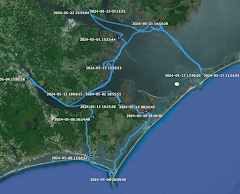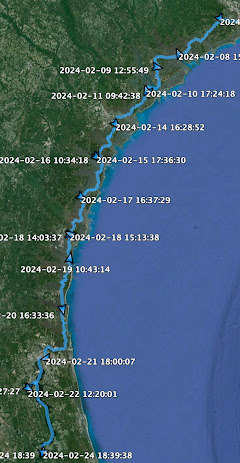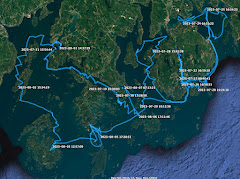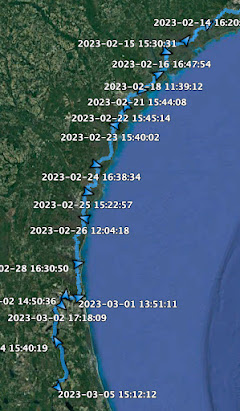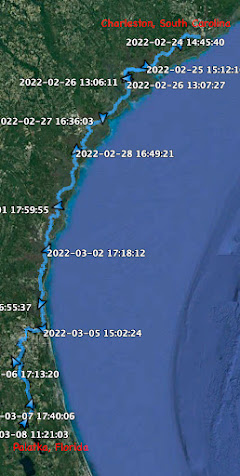Looking through my food bin today I was happy to find a pack of Annie Chun's Roasted Seaweed Snacks. I buy food bit by bit, tossing in an item or two in the grocery cart while doing the weekly grocery shopping. I don't remember buying the seaweed snacks but I am glad I did. These are tissue thin squares of dried seaweed seasoned with wasabi. If you like sushi, which I do, you'll like these. Tangy, salty and with a bit of a bite to them, they are excellent snacks. I savor one or two slices while cooking dinner.
I was happy to see that I've collected most of the food that I will need for the fall trip. Plenty of fruit cups, breakfast bars, canned tuna fish lunches, pasta, cous cous and instant mashed potatoes. I've added a new dinner item, below, grits. How southern can you get? Grits are sold as a breakfast item, but anyone who has ever had shrimp and grits knows that they can be used for dinner. I don't know that I'll have shrimp with the grits, but by adding some grilled peppers, onion, bits of bacon and maybe a couple pieces of fresh caught bluefish I might have a pretty nice meal. At less than two bucks for six servings (that package says 12 but I'll double up for dinners) they are a good deal.
I've ordered a couple of books for the fall sail. The Calling, by Sterling Watson, I found used for a dollar. Maybe it crosses the threshold of "southern gothic", I don't really know. But it appears to be a novel that is about as southern as grits.
And Skeletons for Sadness, a book I have had on my wish list for about a years, has been ordered new. With two novels on board I should have plenty to read. I may still order one of those real life adventure/exploration books, something along the lines of The Lost City of Z that I read on my solo trip last fall. Typically I'll read just one book on a trip - I'm tired at the end of a sailing day and don't stay up too long. But I'll carry a few choices to make sure that I have a book that matches the rhythm of the trip.
I ordered some empty books too, Rite in the Rain No. 393 journals. The 4 5/8" x 7" notebooks are perfect for jotting down weather, location and observations throughout the day. I've filled up all the notebooks that I have and my local supply has dried up. These will come from Amazon.
Wind forecast for tomorrow, which was very light as of this morning, is improving. I'll pack the boat and a lunch tonight.
steve

























































